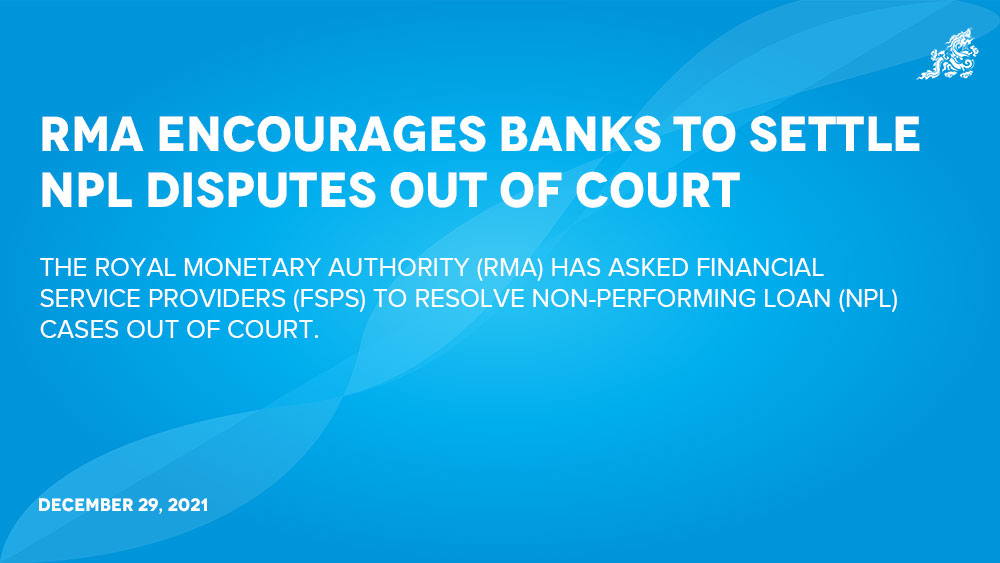Dechen Dolkar
The Royal Monetary Authority (RMA) has asked financial service providers (FSPs) to resolve non-performing loan (NPL) cases out of court.
An out-of-court settlement is an agreement between FSPs and borrowers to amicably resolve NPLs without going to court as litigations are costly, time-consuming and waste resources for both parties.
In the current practice, borrowers and FSPs still prefer to litigate NPLs in court since neither party has an incentive to reach the out-of-court settlement.
As of September 2021, NPLs stand at 12.4 percent amounting to about Nu 21.7B.
The central bank has developed a standard operating procedure (SOP) for out-of-court settlement of NPLs as one of the tools to expedite the resolutions of NPLs.
An official from RMA said that if they go to court, they have to follow the due process, which is long.
He said the central bank encourages banks to resolve NPLs amicably in an out-of-court settlement. “The SOP has two modalities to resolve NPLs.”
He said that based on the institution-specific NPL experience, the FSPs can design the out-of-court settlement schemes. “One option is to settle through liquidation of NPL accounts.”
The official explained that through this option, FSPs will enter the out-of-court settlement for liquidation of NPL accounts through repayment by the client. “It is closing the loan accounts with cash repayment by the borrowers.”
The other option is debt-to-asset swap, where FSPs and borrowers may enter into a voluntary surrender agreement of properties for complete or partial settlement of loan with the partial write-off of interest accrued and late fees to encourage or incentivise out-of-court settlements.
“Banks could benefit as they can do property re-evaluations and write off a certain portion of the loan. It can re-value the property with penalties and write-off the portions to take over the asset,” the official said, adding that banks are taking a bit of partial loss and clients also get benefits with some portion of interest write-off.
However, if the maximum recoverable amount cannot cover a substantial part of the total loan outstanding under this option, the FSPs may restructure the loan balance after settlement with submission of new securities and new execution of loan agreement between FSPs and the borrower.
The NPLs are segregated into viable and non-viable NPLs with the objective of reviving and rehabilitating viable NPLs and foreclosing non-viable NPLs.
The guidelines on segregation of NPLs into viable and non-viable loans 2021 provides the facilities and framework for rehabilitation of viable loans in the financial sector.
To resolve the NPLs, the guidelines on foreclosure and writing-off of NPLs 2021 was designed to empower the FSPs to negotiate with the borrower for take-over of securities, immovables, movables or collaterals, and provides broad parameters on foreclosing or writing-off NPLs.
Section 5.6 of the guidelines on foreclosure and write-off of NPLs 2021 states that the FSP may choose to foreclose the NPL through out-of-court settlement to prevent the cost of court litigations and other judicial constraints.
Banks may design their own schemes for out-of-court settlement, but should submit them to the central bank with prior approval of their board by January 31, 2022.


